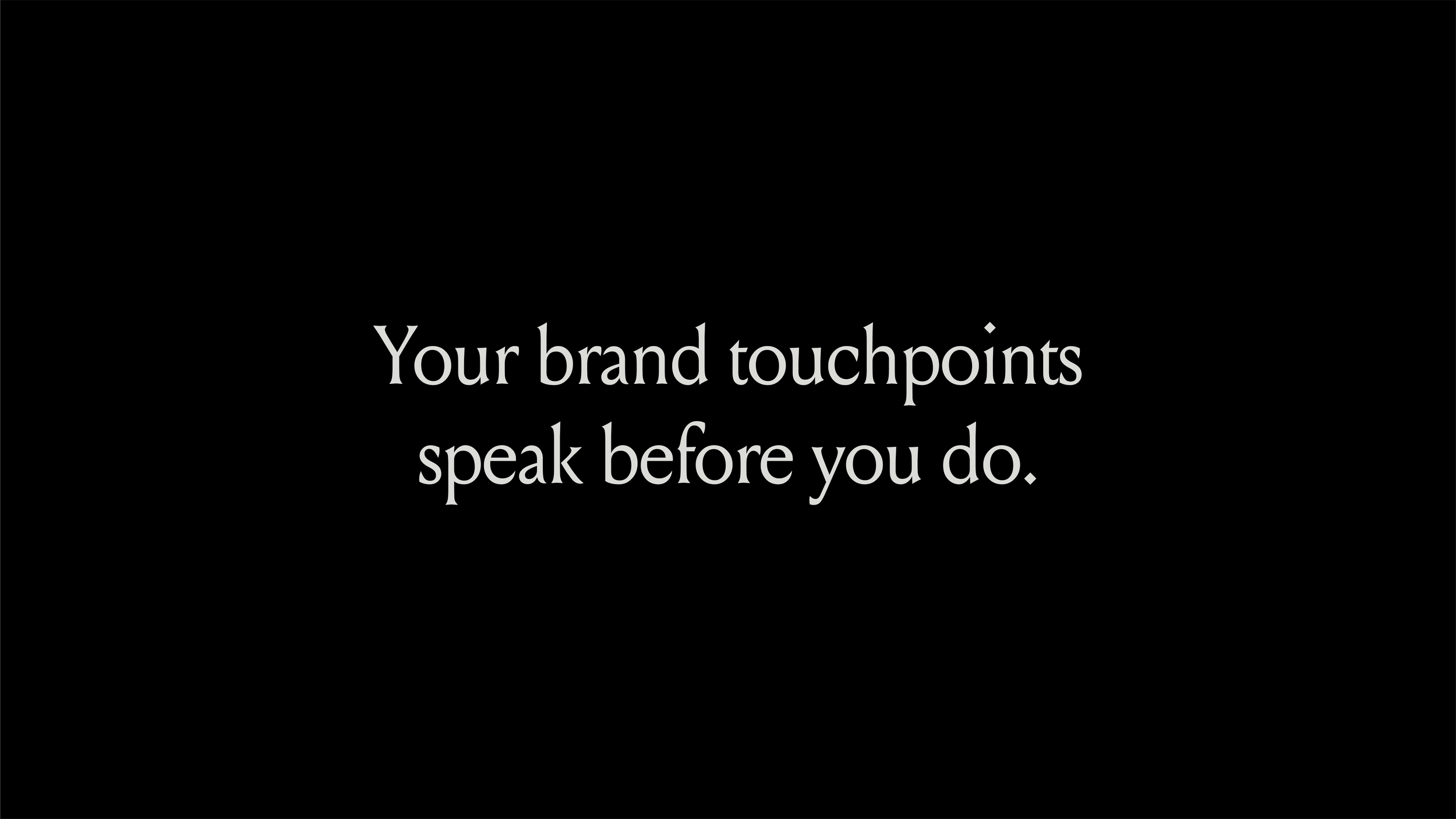Your First Branded Touchpoint: So What Does Yours Say?
A note from E ✣ WEST
Every brand begins with a promise.
Before anyone reads your About page or hears your elevator pitch, they’ve already made a decision.
They’ve seen your branded touchpoints.
What I mean is how you present yourself.
Your website.
Your copy.
Your Instagram grid.
Your welcome email.
Your onboarding PDF.
Your pitch deck.
Your shipping experience.
These are your first touchpoints.
They speak before you do.
And they are either building trust or quietly eroding it.
The Psychology of First Touchpoints
Studies show it takes about 50 milliseconds for users to form a first impression of your brand online. Not five minutes. Not a full scroll. Fifty milliseconds.
This is why aesthetics matter. Not because beauty is superficial, but because beauty communicates value, intent, and energy.
People make emotional decisions first and justify them later. Your branded touchpoints—physical or digital—is what makes someone want to lean in or click away.
What Your Touchpoints Says About You
Your touchpoints doesn’t just say “I’m a business.”
It says who you are and how seriously you take what you’ve made.
Ask yourself:
Does your design feel consistent?
Does your language reflect your values?
Does your visual world feel intentional or inherited?
Do people feel something when they receive or interact with your brand?
Because your brand is an experience.
And people remember experiences.
The Layers of Our Modern-Day
Let’s break down what your touchpoints really means in 2025.
1. Website as Welcome Mat
This is your digital front door.
If it feels unclear, outdated, or misaligned, people will feel that.
It should be as functional as it is inspiring.
Clean design. Clear hierarchy. Easy navigation. Warm tone.
2. Product and Print Materials
Whether it’s a notecard, a branded envelope, a product box, or even a care label—every physical detail reinforces what you stand for. Texture, type, and layout matter more than people realize.
3. Onboarding and Delivery
Your confirmation emails, downloadable guides, welcome packets, client portals.
All of these should be in-brand.
Not just beautiful but thoughtfully designed to communicate clarity and care.
4. Social and Brand Storytelling
Even your Instagram feed is a form of packaging.
What you choose to post, your voice, your captions, your use of white space—it all reflects the world you’re building.
Aligning Outer Expression With Inner Value
Too often, I see beautiful work trapped in packaging that doesn’t do it justice.
Or meaningful work presented in a way that confuses or distracts.
Your outer design should be in full alignment with your inner integrity.
That’s when resonance happens.
That’s when people say, “I don’t know why, but I just trust them.”
Because the truth is, when people can feel what you value in your branded touch points, they don’t need to be sold. They’re already in.
Inside The 360, This is What We Fix
This is why we created The 360. To help founders build brands that don’t just look good, but live well across every touchpoint.
We look at the entire system. From the typography on your invoices to the tone in your bio.
From your Instagram Highlights to your unboxing experience. Every layer is a chance to reinforce who you are and what you stand for.
Because packaging isn’t fluff. It's a function. It’s identity. It’s trust-building in design form.
→ Ready to reimagine how your brand feels at every touchpoint? [Book The 360]
→ Or DM me at@ewest.io. Let’s take what you already do so well, and dress it in the respect it deserves.


